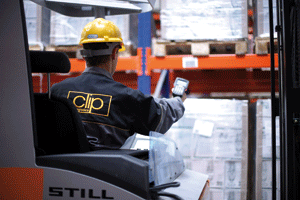Thermal expansion in metals is a phenomenon you must control for and understand when using CNC machines on those materials. If it happens and people don’t know how to accommodate and limit it, their parts could be outside specifications. That’s problematic in many industries with tight tolerances, such as aerospace and medical devices. Reducing thermal expansion’s effects is important for quality control improvements and customer satisfaction.
Know the Temperature Change Coefficients
A metal’s temperature change coefficient indicates how much an additional degree will affect its length. Each metal has a coefficient of linear thermal expansion (CTE) that will help you gauge these effects. For example, aluminum’s CTE is around 13, depending on the type. However, some stainless steels have a CTE of 5 or less.
The higher the number, the more the metal will expand. Knowing that in advance will aid your planning and make it easier to reduce those effects. Another possibility is choosing a metal with a CTE similar to your tool's to minimize the changes in both metals. Alternatively, if your client has some flexibility, consider discussing the pros and cons of switching to a lower-CTE metal for their project.
Understand Speed’s Effect on Thermal Expansion in Metals
CNC machines can meet demands for increasingly higher output. They allow people to produce more in less time and with fewer errors. However, as machine operators increase the equipment’s spindle speeds, they must understand how doing so could cause thermal expansion caused by friction. Then, bearings and gears could get prematurely worn, causing tool distortion and quality problems.
However, one compromise is to use a spindle speeder powered by high-pressure coolant. It allows the CNC machine to operate at high rotations per minute (RPMs) and get vibration-free outcomes.
You must also know the recommended surface-feet-per-minute (SFM) measurement for the metal. Calculate the SFM by multiplying the RPM by the tool diameter. Each metal has an ideal speed associated with it, but things get more complicated since manufacturers also have tool-specific speeds they recommend.
For example, aluminum’s surface speed could be as high as 350 SFM. However, you’d only achieve it at a rate of 35,000 RPM if using a 1-millimeter carbide drill to work with the metal. Some machines cannot reach the required rotational speeds. Then, people must account for cosmetic defects such as chatter marks, in addition to the thermal expansion in metals.
CNC machines can help companies fill orders faster than they could with manual methods or other equipment. Still, people must know how to work with the equipment and the chosen metals to get the best results with fewer defects.
Identify the Source of the Warmth
Reducing thermal expansion in metals also requires knowing the primary cause of the warmth — and knowing external factors could be the culprit. The metals used on a CNC machine and the warmth of the equipment’s spindle cause the cutting tool to go gradually deeper into the material with extended use. When the spindle’s heat spreads through the machine, it could cause material warping of 0.004" or less, which may still be enough to make parts unusable.
In this case, the best proactive measure is to warm the spindle thoroughly before using it to create precise parts. Most machines must run for at least five minutes at RPMs of less than 1,000 to prevent the temperature-related changes that could otherwise occur.
However, environmental factors can also cause thermal shifts. So, even if you initially think thermal expansion in metals caused the skewed results, the problem could be the machine’s setting instead. Even seemingly minor factors — such as the sun streaming through a skylight or the breeze blowing through an open door — can cause issues that reduce overall part quality. Moving the CNC machine or minimizing the environmental factors in other ways can tackle the problem.
Alter the Outcomes
Even once you understand and control thermal expansion in metals, some of the parts may still fall short of expectations. Fortunately, you can take several corrective measures, starting with grinding the material or applying a heat treatment to change its geometries.
Some machines can also make real-time corrections based on measurements taken during production. Those adaptive control systems receive feedback and make corrections, preventing issues people will only notice later.
Making adjustments in a computer-aided design tool is another possibility. Consider doing so once you’ve learned how the thermal expansion in metals you use most often will affect your results. Look for ways to tweak the design so the component will still work as necessary without showing so many temperature-related effects.
You Can Address Thermal Expansion in Metals
Whether you use CNC machines regularly for your job or have some projects in mind that will likely require working with metals, knowing how to minimize thermal expansion will help you get the best results. Although you can’t avoid it, reducing the effects will lead to less wasted materials and better productivity. After learning which preventive measures work best for the metals you use frequently, you’ll build confidence and feel equipped to work with less-familiar materials.

























